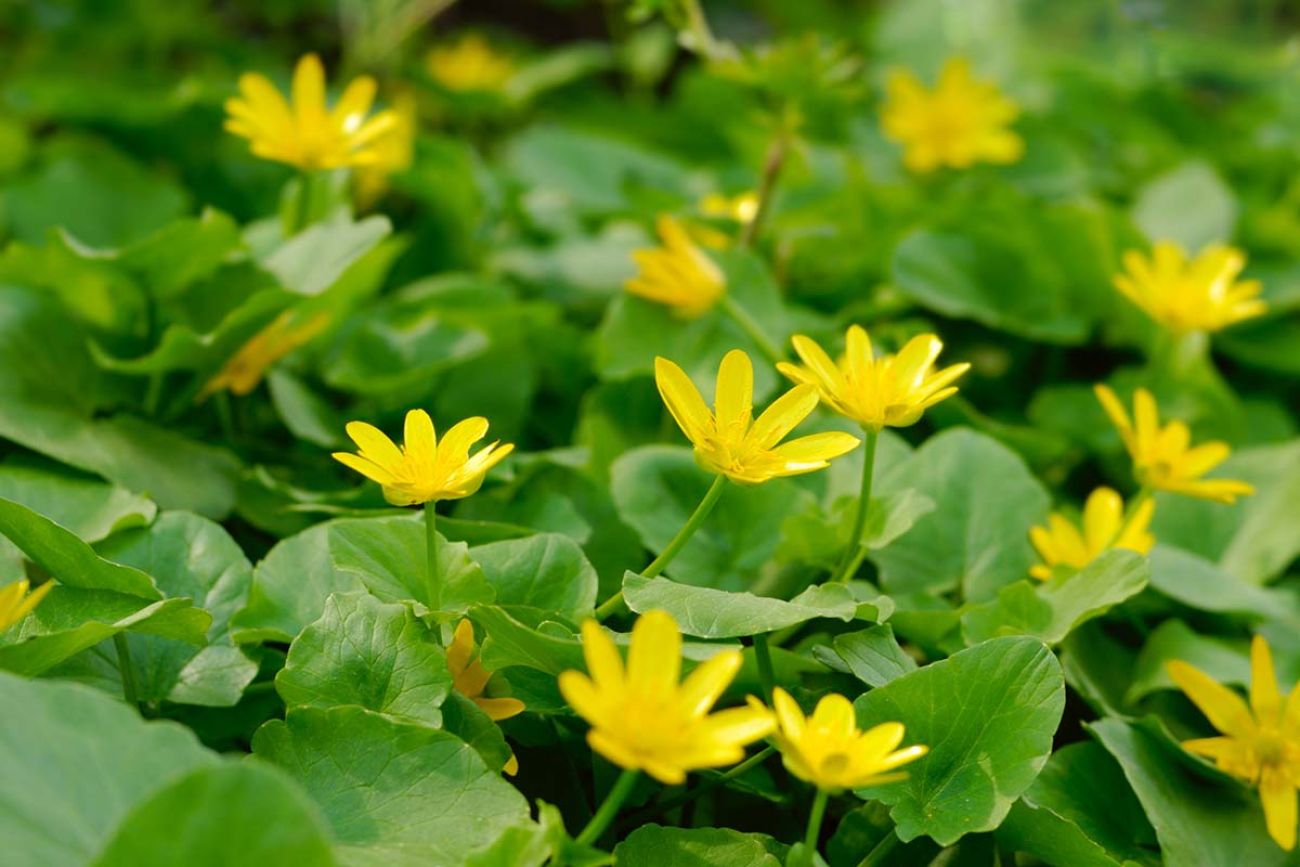Lesser celandine joins Michigan invasive-species watch list, but still legal


- Lesser celandine is now on the state’s invasive species watch list
- The is known for its shiny green leaves and small yellow blossoms and can be found near streams and forested floodplains
- The invasive species has a tendency to grow uncontrollably and push out native plants
Michigan has added lesser celandine to its invasive species watch list.
The plant, also known as ficaria verna, was imported from Europe and quickly escaped into the environment, where it is rapidly outcompeting native plants.
Putting lesser celandine on the watch list could raise public awareness of the dangers, however the move falls short of fully regulating the invasive plant. It remains legal to buy and sell. Advocates have called for outright bans on several invasive species.
Susie Lott, invasive species program specialist at the Michigan Department of Agriculture and Rural Development, told Bridge Michigan that prohibiting sales in Michigan would require a multi-step process that begins with a risk assessment, followed by approval from both the Michigan Commission of Agriculture and Rural Development and Natural Resources Commission.
Related:
- Meet the invasive plant that’s killing off Michigan’s spring wildflowers
- How to protect pets during Michigan’s blue-green algae season
- Invasive spotted lanternfly confirmed in Michigan — second time since 2022
The low-growing perennial plant is among over 2,000 species in the buttercup family. Its green, heart-shaped leaves can be found growing under yellow blossoms.
Lesser celandine is commonly found near streams and floodplain forests in mid-Michigan. The invasive plant has recently been identified in areas near the Grand River watershed.
The plant spreads rapidly because it can reproduce in three ways: By seeds, tubers (underground stems) and bulbils, which are tiny bulb-shaped clones that form where the leaf meets the stem. And because lesser celandine grows in floodplains, those bulbils can easily wash downstream to colonize new areas.
When that happens, they can outcompete native plants like trilliums.
“With the prioritization afforded by the watch list, we're hoping reports by partners and the public can help us understand how far the invasion extends so we can make the best decisions about how to steward our resources – both financial and natural," said Katie Grzesiak, terrestrial invasive species coordinator for the Michigan Department of Natural Resources in a press statement.
The invasive plant was brought to the U.S. as an ornamental plant from Europe over 150 years ago. Then in the U.S., the plant ventured into eastern forests, replacing species-rich understories with dense green mats that bloom in early spring.
Lesser celandine is most commonly found in spring, but the DNR warns people not to get them confused with marsh-marigold, which is more than double the size of lesser celandine.
However, individuals who spot the invasive plant can report it through the Midwest Invasive Species Information Network.
Michigan Environment Watch
Michigan Environment Watch examines how public policy, industry, and other factors interact with the state’s trove of natural resources.
- See full coverage
- Subscribe
- Share tips and questions with Bridge environment reporter Kelly House
Michigan Environment Watch is made possible by generous financial support from:
Our generous Environment Watch underwriters encourage Bridge Michigan readers to also support civic journalism by becoming Bridge members. Please consider joining today.
See what new members are saying about why they donated to Bridge Michigan:
- “In order for this information to be accurate and unbiased it must be underwritten by its readers, not by special interests.” - Larry S.
- “Not many other media sources report on the topics Bridge does.” - Susan B.
- “Your journalism is outstanding and rare these days.” - Mark S.
If you want to ensure the future of nonpartisan, nonprofit Michigan journalism, please become a member today. You, too, will be asked why you donated and maybe we'll feature your quote next time!




